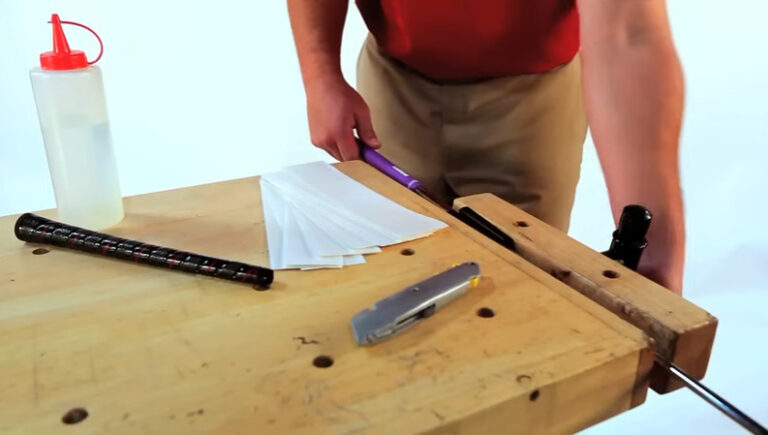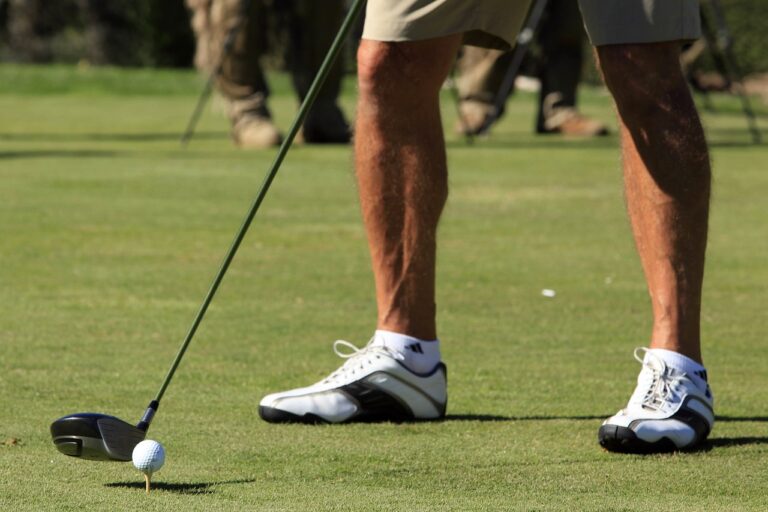How to lower your handicap
Hey there, golfing enthusiast! So, you’re hungry to lower that handicap, huh? Well, you’ve knocked on the right clubhouse door. We’re all about going the extra mile—or should we say, the extra yard?
Let’s get down to the nitty-gritty and tee off into this fantastic game of precision and skill. Buckle up as we explore how to lower your handicap!
The Basics of a Golf Handicap.
At its core, a golf handicap is a number that represents a golfer’s potential ability. It’s a measure of your average best, not your average. The higher the handicap, the less skilled the golfer is perceived to be, and vice versa.
The handicap system is designed to level the playing field, allowing players of different skill levels to compete against each other.
How a Handicap is Calculated.
Your handicap is based on the best scores from your recent rounds, usually the best 8 out of your last 20. It takes into account the difficulty of the courses you’ve played (each course has a Course Rating and Slope Rating) and adjusts your scores accordingly.
The resulting number, your Handicap Index, represents the number of strokes over par you should take on a course of average difficulty.
How to Lower Your Handicap in 7 simple steps.
Here are 7 incredible steps that would help lower your handicap significantly if followed judiciously.
1. Understanding Your Current Position.

Before you can dream of shaving strokes off your game and lowering your handicap, you need to truly understand where you stand. Golf is a multifaceted game, and there’s a lot more to it than just swinging a club.
Assessing Your Golf Game.
Start by taking a good hard look at your golf game. Ask yourself these questions:
- Long Game: How’s your drive off the tee? Are you consistently hitting it straight, or are you often finding yourself in the rough?
- Short Game: How are you on the green? Are you sinking putts with ease, or do you struggle with accuracy?
- Mid-range Game: What about your mid-range game? Are your iron shots precise, or are they wayward?
Identifying Strengths and Weaknesses.
Now that you’ve got a broad picture, it’s time to drill down and find those pesky weaknesses. Is your putting sub-par, or do you find your long game lacking? Identifying these will provide you with areas to focus your practice on.
On the flip side, know your strengths as well. This isn’t just for a morale boost (though it’s nice to know what you’re good at), it’s also crucial for strategy. When you’re out on the course, you’ll want to play to these strengths whenever possible.
Tracking Your Progress.
Finally, keep tabs on your progress. This isn’t just to pat yourself on the back when you improve (though feel free to do so), it’s about ensuring that the changes you’re making and the practice you’re doing are resulting in noticeable improvement. If they’re not, then it might be time to tweak your approach.
Understanding your current position is all about clarity. And with clarity comes the power to change, improve, and ultimately, lower that handicap.
2. The Techniques to Improve:
No golfer has ever become a master overnight. It takes time, patience, and an understanding of the core techniques that define the sport. Let’s chip away at some of the most important techniques you’ll need to hone to lower your handicap.
Perfecting Your Grip.
Here’s the thing – the grip is your only physical connection with the golf club. Sounds pretty important, right? It absolutely is.
A correct and consistent grip helps with accurate shot direction, correct ball trajectory, and controlling the club during the swing. Try out different grip styles – the interlocking, the overlapping, and the baseball grip, and see which one suits you best.
Nailing Down Your Swing.

When it comes to golf, the swing is king. And each swing is a combination of numerous factors – balance, rotation, grip, stance, and follow-through. Yes, it can seem daunting, but don’t get your knickers in a knot!
Start with the basics: keep your head still, rotate your shoulders and hips, and make sure your follow-through is smooth. As you practice, you’ll get a feel for the rhythm and flow of a good swing.
Fine-Tuning Your Short Game.
Let’s face it – a lot of us love to whack the ball as hard as we can off the tee. But golf isn’t just about power – precision plays a huge part, especially when you’re close to the hole.
In your short game, work on your chipping, pitching, and bunker shots. And remember, it’s not just about getting the ball onto the green; it’s about getting it close to the hole.
Putting with Precision.
Ah, putting. The final stroke, the coup de grace. Sounds simple, right? Anyone who’s played golf knows that’s not the case.
Putting is a game of precision, patience, and strategy. You have to read the green, understand the speed, and then execute a perfect stroke.
And since so many golf strokes are made on the green, becoming a skilled putter can dramatically lower your handicap.
Every golfer’s journey to improvement is unique, but by focusing on these core techniques, you can ensure that your journey is on the right path.
3. Upgrading Your Equipment:

Now we come to the gear, the tools of the trade. Equipment does matter in golf, and knowing your way around your golf bag can be just as crucial as knowing your way around the course.
Choosing the Right Clubs.
Every golfer’s bag is a personal toolkit designed to face a myriad of situations on the course. And let’s not beat around the bush – clubs can be pricey, but think of them as an investment in your game.
Your set should include a mix of drivers, fairway woods, hybrids, irons, wedges, and a putter. Each serves a unique purpose, and knowing when to use each club is an art in itself.
The Importance of a Good Golf Ball.

It might look simple, but a golf ball is a marvel of engineering designed to balance distance, spin, and control. And just as with clubs, using the right golf ball can have a significant impact on your game.
Different balls can have different numbers of layers, from two-piece construction up to five layers. In general, more layers provide greater control and spin but may be less durable and more expensive. Your choice of ball will depend on your skill level, style of play, and budget.
The Devil’s in the Details: Accessories.
Beyond the clubs and balls, several accessories can help improve your game. Golf gloves can enhance grip and control, while rangefinders can give you accurate distance readings on the course. Even your choice of tee can impact your drive’s height and distance.
In summary, while equipment won’t make you a great golfer on its own, the right equipment, used correctly, can help you become the best golfer you can be. It can complement your skills, suit your style of play, and ultimately, help lower your handicap.
4. Training and Practice:
We all know the saying, “practice makes perfect,” right? Well, in golf, it’s more like “practice makes progress.” It’s all about honing your skills, understanding your game, and inching closer to that elusive perfect round. Let’s explore how training and practice can help you lower your handicap.
Establishing a Routine Practice
The key to improvement in golf is consistency. That doesn’t just mean consistently hitting great shots (though that’s the dream), but consistently practicing.
Establishing a routine practice schedule is vital. This could mean hitting the driving range a few times a week or committing to playing a full 18 holes every weekend. The important thing is that you’re regularly working on your game.
Mixing Up Your Practice.
Variety is the spice of life, and it’s also a key ingredient in effective golf practice. Don’t just stick to one kind of shot or one club; mix it up.
Spend time on your long game, your short game, your putting. The more well-rounded your practice, the more well-rounded your game will be.
Working with a Pro.
If you’re serious about lowering your handicap, it might be worth getting some professional guidance. Working with a golf pro can provide personalized advice tailored to your game.
They can spot bad habits that you might not even realize you have and can provide tips and drills to help you address them.
Practicing Under Pressure.
It’s one thing to hit a great shot when you’re relaxed on the driving range, but what about when you’re on the 18th hole and need to sink a putt to beat your best score? If you can, try to practice under conditions that mimic the pressure you might feel during an actual round.
The bottom line is that there’s no substitute for training and practice in golf. No matter how much natural talent you have, it’s through deliberate practice that you’ll be able to consistently improve and lower your handicap.
5. Playing Smarter, Not Harder:
In the quest to lower your handicap, one phrase should be your mantra: play smarter, not harder. Golf isn’t just about physical skill; it’s a mental game as well, and understanding how to play the game smartly can be just as crucial as knowing how to swing a club.
Understanding Course Management.
Like as I have always said, Golf is more than just hitting the ball; it’s about hitting the ball in the right direction. Understanding the layout of the course, the location of hazards, the wind direction, and even the position of the sun can all factor into your decision-making.
Every hole is a puzzle, and each shot is a piece of the solution. By understanding course management, you can make smarter decisions that lead to lower scores.
Making Decisions Based on Your Skill Level.
Sure, it might be tempting to try and carry that water hazard with your driver, but is that the smart play? Always make decisions based on your skill level, not your ego.
If you’re a beginner, it might be smarter to take a more conservative approach. Play to your strengths, avoid your weaknesses, and don’t let pride dictate your decisions.
Learning from Your Mistakes.
Mistakes are inevitable in golf; what’s important is that you learn from them. Did you slice your last drive? Don’t just shrug it off; try to understand why it happened. Analyzing your mistakes is one of the best ways to improve your game and lower your handicap.
Staying Mentally Tough.
The mental aspect of golf cannot be overstated. Staying focused, managing your emotions, and maintaining a positive attitude can significantly impact your performance. Remember, a bad hole doesn’t have to ruin a round. Stay mentally tough, and keep pushing forward.
In conclusion, playing smarter, not harder, is about understanding the nuances of golf. It’s about making decisions based on logic rather than emotion, learning from your mistakes, and managing the course effectively. And by doing so, you’ll be well on your way to lowering your handicap.
6. Using Technology to Your Advantage:
In the modern age, technology permeates almost every aspect of our lives, and golf is no exception. From sophisticated club designs to GPS devices, technology can be a game-changer. Here’s how you can harness it to lower your handicap.
Embracing Golf Tech Gadgets.
As a golfer in the digital age, you have an arsenal of tech gadgets at your disposal. Here are a few that can help improve your game:
- Golf Rangefinders and GPS Devices: These gadgets provide precise distance readings to the hole, hazards, and other points on the course, helping you make informed decisions about your shots.
- Swing Analyzers: These devices can give you detailed data about your swing, including club speed, swing path, tempo, and face angle at impact. This information can be invaluable for identifying issues and making improvements.
- Golf Watches and Apps: There are numerous smartwatches and mobile apps designed specifically for golfers. They can track your score, provide yardage information, analyze your swing, and more.
Training with Golf Simulators.

Golf simulators are a fantastic tool for practice. They provide an immersive, realistic golfing experience and offer instant feedback on each shot. This allows you to experiment with different techniques and understand the impact of minor changes on your shot outcome.
Staying Informed and Connected.
The internet is a treasure trove of golf-related information. From online tutorials and video lessons to forums and social media groups where you can connect with other golfers, make sure to take advantage of these resources.
Using technology to your advantage doesn’t mean you have to lose touch with the traditional aspects of golf. Instead, think of it as adding another club to your bag, another tool at your disposal as you strive to lower your handicap.
7. The Mental Aspect of Golf.
They say golf is a mental game. They’re right. You can have a picture-perfect swing, but if your mind isn’t in the right place, your scorecard is bound to suffer. Let’s delve into the mental aspect of golf and how it can help lower your handicap.
Developing a Pre-Shot Routine.
Just like a basketball player at the free-throw line or a tennis player serving a solid pre-shot routine can help calm your nerves and focus your mind. This routine could include visualizing the shot, taking a few practice swings, aligning yourself to the target, or even a deep breath before you strike the ball.
Practicing Mindfulness.
In golf, as in life, it’s important to stay in the present moment. Worrying about your last shot (or your next one) won’t help you hit the ball that’s currently at your feet. Practice mindfulness to help keep your focus on the present shot.
Cultivating Patience.
Golf is a slow game. It’s not about rushing; it’s about taking your time, thinking about your shots, and executing them with care. Cultivating patience can lead to better decision-making, fewer mistakes, and lower scores.
Keeping a Positive Attitude.
Let’s face it – golf can be frustrating. But a negative attitude can lead to tension, which can disrupt your swing and your game. Instead, try to maintain a positive attitude, even when things aren’t going your way. Remember, it’s just a game, and games are meant to be enjoyed.
Visualizing Success.
Visualization is a powerful tool in any sport, and golf is no exception. Before each shot, try to picture in your mind exactly what you want to happen. Imagine the trajectory of the ball, its landing spot, and even its final position. Visualizing success can help make it a reality.
The mental aspect of golf is often overlooked but mastering it can give you a significant edge. By developing a strong mental game, you’ll be well-equipped to tackle any challenge on the golf course, helping you to lower your handicap.
FAQs
How much time will it take to lower my handicap?
Well, it’s not an exact science. It depends on your current skill level, the amount of time you can dedicate to practice, and the quality of your training. But remember, it’s a marathon, not a sprint!
Can I lower my handicap just by practicing more?
While practicing more certainly helps, it’s equally important to practice smarter. Focusing on your weak areas and incorporating drills that target them will be more beneficial than just mindlessly hitting balls on the range.
Does upgrading my golf equipment really matter?
It does, but remember that the Indian matters more than the arrow. Quality equipment can enhance your performance, but it won’t replace skill and practice.
How does a positive attitude help lower my handicap?
Golf is a mental game as much as a physical one. A positive attitude can help you handle pressure better, make smarter decisions, and bounce back from mistakes more effectively.
Can I lower my handicap without professional lessons?
Yes, you can. There’s a wealth of self-teaching tools available, from online tutorials to golfing apps. However, professional lessons can provide personalized guidance and fast-track your progress.
How can course management improve my handicap?
By understanding the course better, you can make strategic decisions that allow you to play to your strengths and avoid your weaknesses. This can save you precious strokes and lower your handicap.
Conclusion
Learning how to lower your handicap is about understanding the game from various perspectives.
It’s about improving your technique, making wise equipment choices, training smarter, harnessing technology, managing the course better, and embracing the mental aspect of golf. It might seem like a lot, but remember that every journey begins with a single step—or in this case, a single stroke.
While lowering your handicap won’t happen overnight, it’s a rewarding journey that can offer a lot more than just a better score. It’s about self-improvement, patience, and the joy of mastering a game that can truly be a lifetime sport.
Always remember, the most important shot in golf is the next one. So keep swinging, keep improving, and most importantly, keep enjoying this wonderful game!






